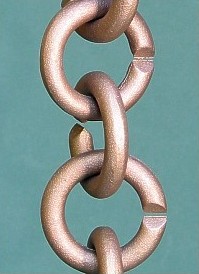Waiting for the Barbarians
Philip Glass premiered this opera, his twenty-first, at Germany's Theatre Erfurt in 2005. Christopher Hampton adapted the libretto for Waiting for the Barbarians from J. M. Coetzee's 1980 novel of the same name. The story is set in an unspecified town at the edge of an empire, embroiled in a conflict with an unspecified adversary. The characters' xenophobic, racist paranoia justifies, in their minds, their inflammatory tactics, including taking prisoners, interrogating them under torture, and summarily executing them without trial. Coetzee, a Cape Town-born author who won the Nobel Prize in 2003, had the South African apartheid era in mind, but when Glass approached the work as an opera, it was against the background of the American invasion of Iraq and the Abu Ghraib scandal.
Glass, Waiting for the Barbarians, R. Salter, E. Perry, Philharmonisches Orchester Erfurt, D. R. Davies
(released June 3, 2008)
Orange Mountain Music 0039
J. M. Coetzee, Waiting for the Barbarians
A government official, a magistrate in a small imperial outpost, begins to disapprove of his government's conflict against a faceless enemy group, the "barbarians." He watches as a colonel and other army officers take over the prosecution of the war in his town. By becoming involved with a barbarian prisoner and trying to stop the torture, the Magistrate becomes a suspect and is himself tortured, which turns the tables on the government but ultimately makes the punishment fall on a man who tried to stop these illegal practices. Some superficial similarities invite comparison to Kaija Saariaho's Adriana Mater, premiered one year later in 2006: the scenes are connected by "dreamscape" orchestral interludes, the action is commented on by a faceless chorus placed in the pit, the horrors of a society at war are communicated through a small group of individuals.
The live recording on this 2-CD set was made not during the opera's premiere run, in Erfurt in September 2005, but at a 2006 Amsterdam performance by the same forces (although that information is not found in the liner materials). There are more than enough glitches and noises to convince the listener of the value of studio recording (there are also several tracking errors on my second disc, especially in the final tracks). Musically, it is not always the most polished performance. Singers more than once fall out of time with the orchestra, and the solo voices are captured in a close sound that exposes some odd qualities. Glass's music, no surprise, is in the style that one associates with him, but not as austere a version of minimalism as heard in the much earlier Satyagraha, for example. The orchestration is tinged with interesting colors, more varied than some other Glass works, with percussion added, for example, to the wavelike repetitions of short motifs. As I have felt before with Glass, the music would work better with its visual component (Glass's forte, I remain convinced, is the film score). Waiting for the Barbarians is a significant and timely work, but not a home run.
133'46"
































































